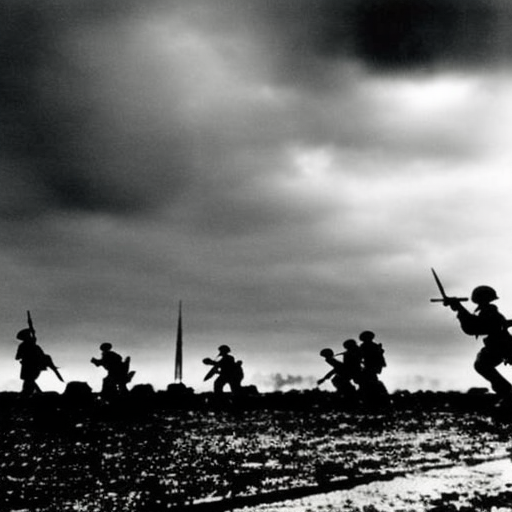Battle of Passchendaele: A Brutal and Costly Struggle in World War I
The Battle of Passchendaele, also known as the Third Battle of Ypres, was a major offensive fought between July and November 1917 during World War I. The battle took place near the Belgian town of Passchendaele and was characterized by its brutal and costly nature. It was one of the most infamous battles of the war, known for its heavy casualties and the difficult conditions faced by soldiers on both sides.
Context: By 1917, the war had reached a stalemate on the Western Front, with neither the Allies nor the Central Powers able to gain a significant advantage. The British, under the leadership of General Sir Douglas Haig, planned the offensive at Passchendaele as a means to break through the German lines and capture the Belgian coast, which would potentially disrupt German submarine operations in the English Channel.
The Battle Begins:
The battle began on July 31, 1917, with a massive artillery bombardment by the British. However, heavy rains turned the battlefield into a quagmire, transforming the already difficult conditions into a nightmarish landscape of mud and water-filled shell holes. The combination of the rain and the intense shelling destroyed drainage systems, making movement extremely challenging for soldiers and equipment.
The initial assault saw some success, with the British capturing several German positions. However, the gains were short-lived as the German defenses held firm and launched counterattacks. The battle quickly devolved into a series of costly and bloody engagements, with both sides suffering heavy casualties.
The Cost of the Battle:
The Battle of Passchendaele was marked by an extraordinary loss of life. The British and Dominion forces suffered approximately 275,000 casualties, while the Germans incurred an estimated 220,000 casualties. The battle is often remembered for the high number of casualties relative to the territorial gains made.
The conditions on the battlefield were a major contributing factor to the high casualty figures. The incessant rain turned the ground into a quagmire, making movement difficult and exhausting. Soldiers often found themselves trapped in the mud, unable to move forward or seek cover. The mud also made it challenging to transport supplies and reinforcements, further hampering the progress of the offensive.
Legacy and Significance:
The Battle of Passchendaele is remembered as a symbol of the futility and horror of trench warfare during World War I. The relentless fighting and the appalling conditions faced by soldiers on both sides showcased the immense human cost of the conflict.
Despite the heavy losses, the battle did achieve some strategic objectives. The British were able to capture Passchendaele and secure a small stretch of the Belgian coast. However, the gains were minimal compared to the cost in lives and resources.
The battle also had a significant impact on the morale of the troops. The relentless fighting and the harsh conditions took a toll on the soldiers’ physical and mental well-being. Many soldiers developed a sense of disillusionment and questioned the purpose of the war.
In conclusion, the Battle of Passchendaele was a brutal and costly struggle fought during World War I. The battle was characterized by its difficult conditions, heavy casualties, and limited territorial gains. It serves as a stark reminder of the horrors of trench warfare and the immense human cost of the conflict.












